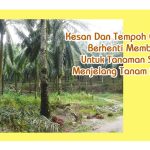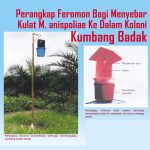American bullfrog (Lithobates catesbeianus) — Overview
Bullfrog farming in Malaysia offers an unusual but potentially profitable niche within aquaculture. The American bullfrog (Lithobates catesbeianus) adapts well to Malaysia’s tropical climate, and the meat enjoys a steady demand from Chinese restaurants and export buyers. Yet, while the enterprise shows promise, it is far from risk-free.
Market potential
Domestic consumption of bullfrog meat is modest—about 400 tons annually—but consistent, and neighbouring countries such as Singapore offer export prospects. A medium-scale farm can cost around RM 100,000 to build and yield up to 15 tons a year. With live or processed frogs selling for RM 30–50 per kg, annual gross income might reach RM 450,000–750,000. After subtracting feed, labour, and maintenance, profits could range from RM 40,000–100,000. For smallholders or investors with limited land, this is an attractive diversification option.
Biological and environmental suitability
Malaysia’s warm, humid weather allows year-round rearing without hibernation, and bullfrogs reach market size (250–300 g) within 4–6 months. The species’ fast growth and high feed-conversion efficiency make it appealing. Ponds or tanks can be constructed on small plots, often beside fish farms, using water recirculation systems to reduce costs and waste.
Challenges and constraints
Despite these strengths, survival rates can be unpredictable. Cannibalism among juveniles may cause up to 30 percent mortality, while bacterial infections such as Elizabethkingia meningoseptica and other pathogens are common. Poor hygiene, stagnant water, or excessive stocking density quickly raise disease risk. The industry also faces scrutiny over effluent pollution and the spread of amphibian diseases to wild populations. Hence, proper filtration, drainage, and biosecurity systems are essential but costly.
Another limitation is market volatility. While frog meat is prized by some consumers, it remains a niche product, and prices can fluctuate depending on restaurant demand and export restrictions. Farmers must also comply with the Department of Fisheries regulations and sometimes environmental impact assessments—processes that can delay or complicate start-ups.
Management complexity
Successful operations demand hands-on management. Farmers must monitor water temperature, pH, and oxygen levels daily; sort frogs by size to prevent cannibalism; and control predators such as snakes and birds. Feeding must be precise to maintain feed efficiency and minimise waste. These tasks make bullfrog farming more labour-intensive than raising catfish or tilapia.
Economic outlook
A disciplined farmer who masters water control, biosecurity, and marketing could break even within three years. Many former farms, however, closed due to poor disease control or unstable buyers. The most viable ventures are those tied to restaurant chains or integrated with fish-farming systems that recycle water and feed waste. Adding value through processing—selling frozen frog legs or packaged meat—can improve margins and reduce dependence on seasonal demand.
Strategic recommendations
New entrants should begin with a pilot pond to understand local conditions and disease behaviour before expanding. Building relationships with restaurant buyers, ensuring proper licensing, and maintaining hygiene standards are critical. Farmers who adopt modern waste-treatment and water-reuse systems not only reduce mortality but also meet environmental expectations.
Conclusion
In today’s Malaysian scenario, bullfrog farming remains a promising but specialised venture. It offers good returns on small land areas and meets a steady market demand, yet requires skill, capital, and vigilance. Those who view it as a carefully managed aquaculture business rather than a quick-profit scheme stand the best chance of success. With proper technology, environmental compliance, and market planning, bullfrog farming can indeed contribute to Malaysia’s growing aquaculture diversity.
Source: Professional Platform
Note: For Reference Only










